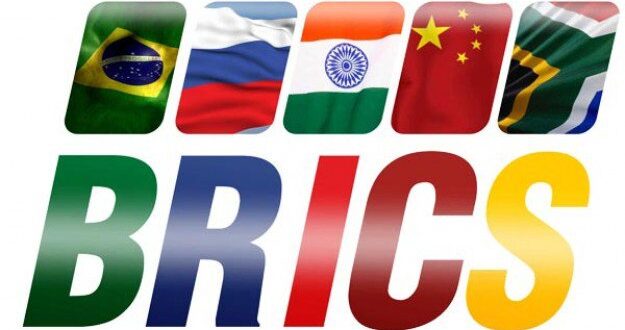Brazil, Russia, India, China, South Africa — have surpassed the Group of Seven (G7) in terms of Gross Domestic Product (GDP) based on Purchasing Power Parity (PPP), data published by the UK-based economic research firm Acorn Macro Consulting shows.
The G7 club of industrialized countries consists of the U.S., Canada, the UK, France, Italy, Germany, and Japan.
The BRICS group makes up 41% of the global population and account for 16% of the world’s trade.
According to the British consultancy, the five BRICS nations now contribute nearly 31.5% of the global GDP, compared to 30.7% by G7 countries.
The development comes as Western countries, which include G7 nations, grapple with recessionary headwinds owing to the high interest rates set by central banks to curb domestic inflation, which in turn has been caused by a surge in fuel and food prices.
The IMF foresees negative growth for the UK, while the U.S. is expected to be the best-performing G7 economy, with a growth forecast of nearly 2%.
On the other hand, the BRICS’ economies of India and China are expected to drive global growth this year, both estimated to grow from five to seven percent this year.
In spite of the ongoing Western sanctions, Russia’s economy has been projected to rebound and grow at 3% this year, based on the International Monetary Fund’s (IMF) forecast. The IMF anticipates that Russia’s economic growth is going to accelerate to 2.1% in 2024.
Not only have BRICS countries rejected the US-led Western sanctions against the Russian Federation, but these nations have also stepped up efforts to expand trade in local currencies as a way to overcome trade disruptions caused by the said restrictions.
Besides, BRICS has been gaining popularity among low and middle-income nations, many of which have expressed a desire to be part of the informal group.
Naledi Pandor, foreign minister of South Africa, the country that is currently chairing BRICS, said last month that Saudi Arabia, Argentina, Mexico, the UAE, and Algeria were among 12 nations that want to join the association.
ADB Forecasts Faster Economic Growth for India and China in 2023
Another media report said:
The Asian Development Bank (ADB) in its outlook report has forecast 4.8% growth in 2023 for developing Asia, a group of 46 countries.
The reopening of China and a healthy domestic demand in India will help the two South Asian giants grow faster than the rest of the world, the ADB says in its regional forecast report, published on Tuesday.
“Before China left [its] zero-COVID policy behind, our forecast for growth in China this year was 4.3%. But we’ve upgraded that in this announcement to 5 percent,” ADB Chief Economist Albert Park said.
“Growth in China is expected to rebound to 5.0% this year from 3.0% in 2022,” the report added.
On the other hand, India is predicted to witness one of the fastest expansions for a major regional economy, with a projected growth of 6.4% in 2023. This number, however, is lower than that of the previous year, when India witnessed 6.8% growth.
Meanwhile, the ADB has predicted 6.5% growth for Vietnam this year, a decrease of 1.5% if compared with 2022.
The average forecast for Southeast Asia remains at 4.8% in 2023 and 5% next year, which is, nevertheless, the fastest recovery compared with the rest of the world, according to the ADB report.
The ADB also commented on OPEC+ members’ announcement to cut oil production, suggesting it could be challenging for the South Asian region due to higher oil prices.
Earlier this week, several OPEC+ members announced oil production cuts of up to 1.16 million barrels daily.
The ADB has forecast oil prices to average $88 per barrel this year and $90 next year.
 Eurasia Press & News
Eurasia Press & News



